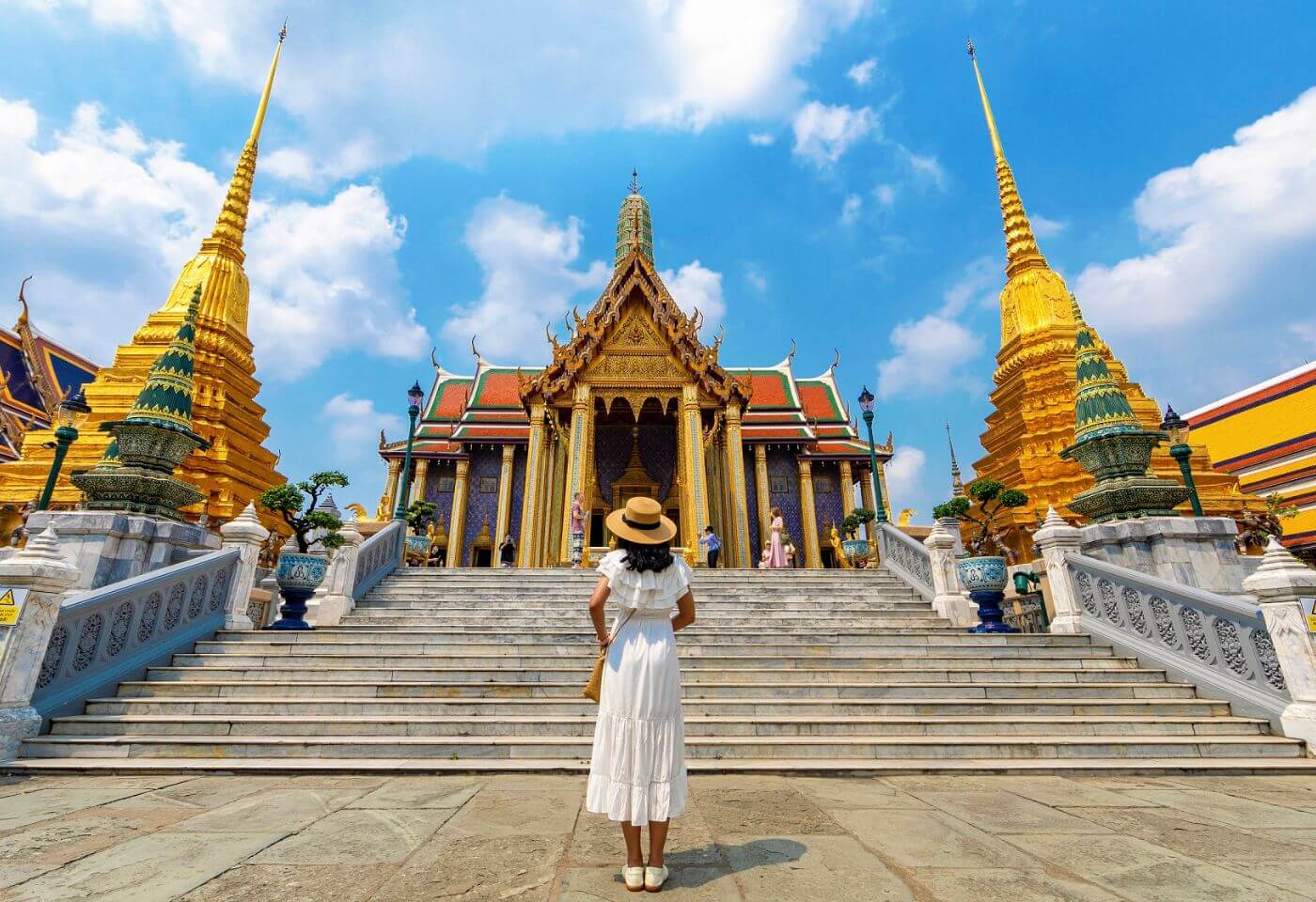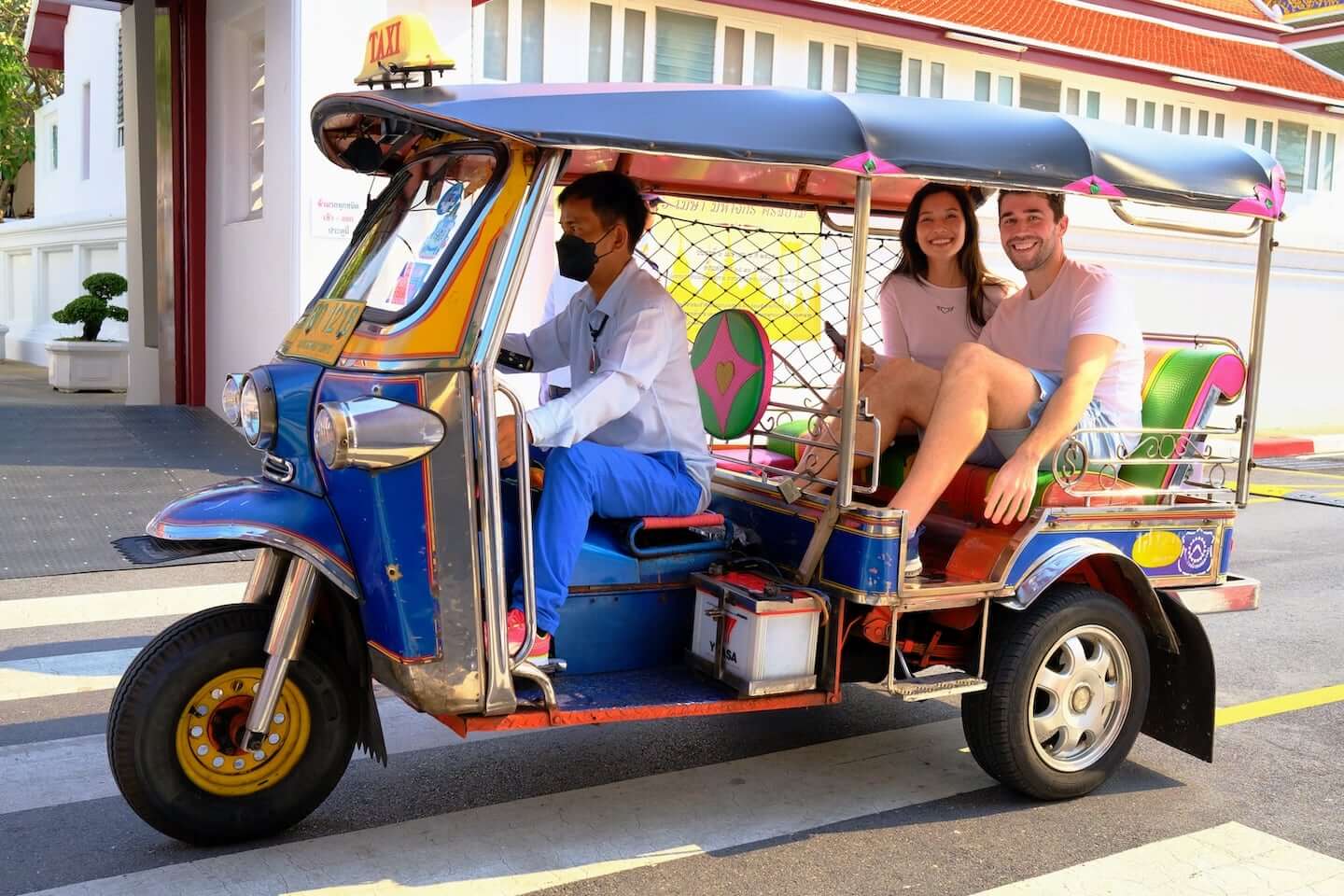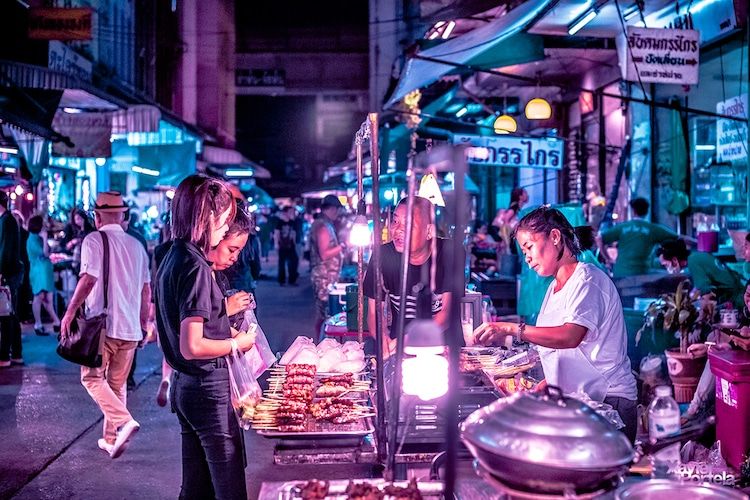Language in Bangkok
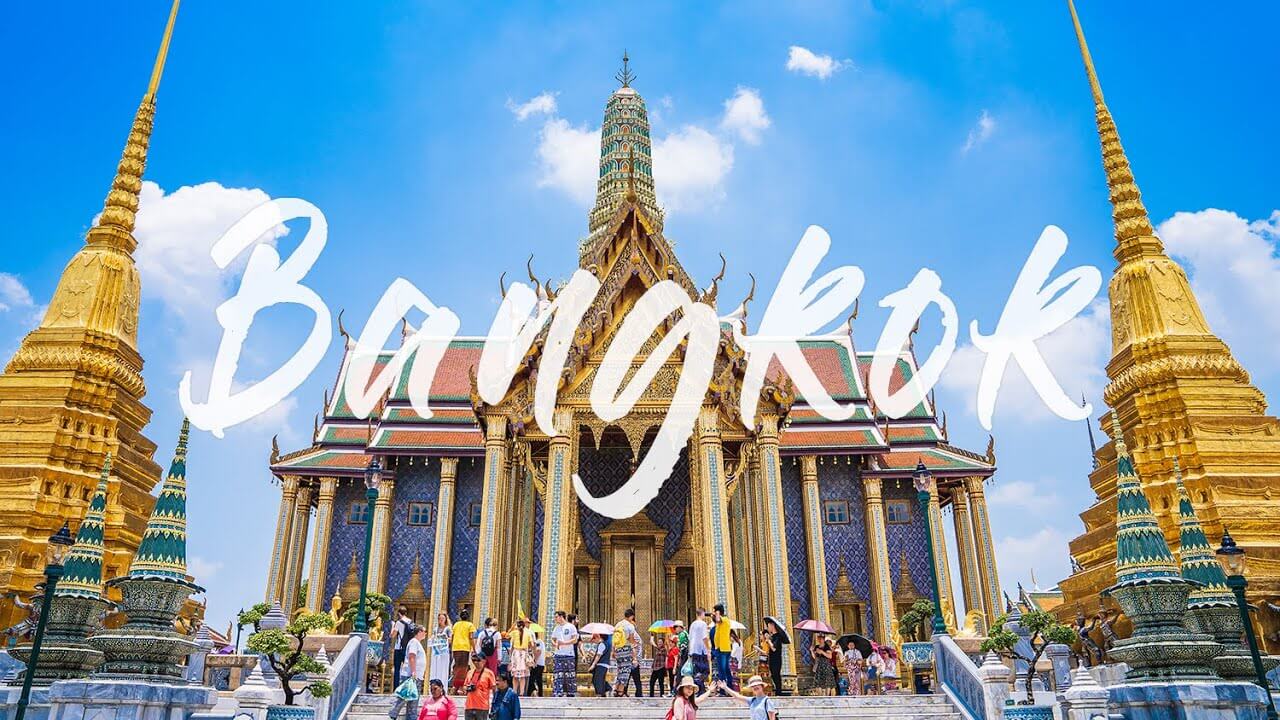
We couldn’t be happier now that most countries in Southeast Asia have finally started opening up again after the pandemic! We at ForeverVacation, along with our guides, have really missed showing you around in one of our all-time favorite countries—Thailand! Ever since Thailand reopened, it has been a joy to see so many of you on our tours in Thailand and tours in Bangkok. Thank you for sticking around; we really appreciate you not forgetting about us!
Our Top Trending Tours
For those who have never traveled with us, welcome! You’ve come to the right place! If you’re planning to travel to Thailand for the first time, you’re in for an unforgettable experience! Thailand is not only a beautiful and affordable travel destination, but it’s also home to crystal-clear beaches, exotic food, vibrant nightlife, a magnetic culture, and rich historical sites!
We don’t want to tell you what to do, but your first stop should definitely be Bangkok, Thailand’s exciting capital! Bangkok is a city of extremes—it’s busy, chaotic, and overwhelming, yet surprising, unique, and vibrant. Although the city may not be every traveler’s cup of tea, one thing is certain: Bangkok is a place you’ll never forget! Every year, over 16 million people visit this amazing city, and soon, you’ll be one of them!
We understand that traveling to a new country for the first time can be both exciting and a bit intimidating. Some travelers worry about language barriers, which can make exploring challenging. However, please don’t let this stop you from experiencing this beautiful country! In this blog post, we’ll provide as much helpful information as possible so you can start your holiday stress-free!

What is the main language spoken in Bangkok?
The official language in Bangkok is Thai. No surprise there. The answer may seem obvious, however, once you get out of Bangkok and have a look at Thailand globally - a country of over 60 million people and an area that spans from China to Malaysia - there is understandably a lot of diversity in Thailand's languages and there are a lot of dialects shaped by the country's rich culture. The dialects are sometimes so different that even locals that live on different sides of the country have trouble understanding one another.
Thai is also made up of lots of foreign loanwords from other languages, including Chinese, Pāli, Sanskrit, Khmer, Portuguese, Austronesian, and more recently, English.
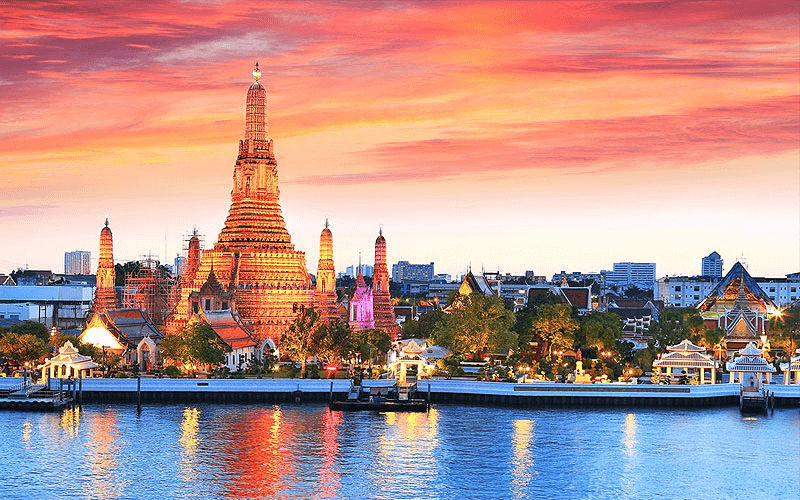
Some history on the Thai language
Thai, also historically known as Siamese, is part of the larger Tai language family or Tai-Kadai. Tai-Kadai originated from Proto-Tai, whose speakers migrated to southeastern Asia over 2,000 years ago. There are 76 languages in the Tai-Kadai group, 2 of those are national languages - Thai and Lao.
The overlap and shared elements of these Tai dialects are evident in the many languages spoken in Thailand. As people migrated and lived among each other, languages became shared, words were borrowed or altered, and new dialects were formed. The arrival of Thai language speakers from northern Vietnam to southeastern China, colonization, decolonization, and centuries of internal politics have shaped the character and variety of languages in Thailand.

Speaking VS Writing
The Thai language was first written in 1283, and the official language is still very close to its original form. In practice, there are many elements in both written and spoken Thai that can make it challenging for learners.
Did you know there are many people who cannot read Thai characters even though they can speak it? For many, including ourselves, Thai writing may appear as squiggles, circles, and lines, which can be intimidating to learn.
In total, there are 72 characters in the Thai alphabet, consisting of 44 consonants and 28 vowels. This is further divided into 3 consonant classes, 12 long vowels, and 16 short vowels. Although this seems more complex than the 28 letters of the Latin alphabet, 6 characters (2 consonants and 4 vowels) are no longer used.
Thai is written from left to right, but due to character arrangement, you may need to look above or beside characters to read them correctly. Traditionally, Thai is written without punctuation or spaces between words.
Fun fact: The Thai language is known for its lengthy words. For instance, the official name of Bangkok is: Krungthepmahanakhon Amonrattanakosin Mahintharayutthaya Mahadilokphop Noppharatratchathaniburirom Udomratchaniwetmahasathan Amonphimanawatansathit Sakkathattiyawitsanukamprasit.
This 167-letter, 40-syllable name holds the Guinness World Record for the longest city name, translating to “the Great City, the Residence of the Emerald Buddha, the Grand Capital of the World Endowed with Nine Precious Gems, the Happy City.”

Do people in Bangkok speak English?
Yes. Don't worry!
Many Thai people study English in school, and a significant number speak and understand English in Bangkok and other major tourist areas. Communication should generally go smoothly. However, in smaller villages and towns outside the big cities, English is less common.
If you don’t speak Thai, try talking to younger people or students, as they often have better English skills due to their education.
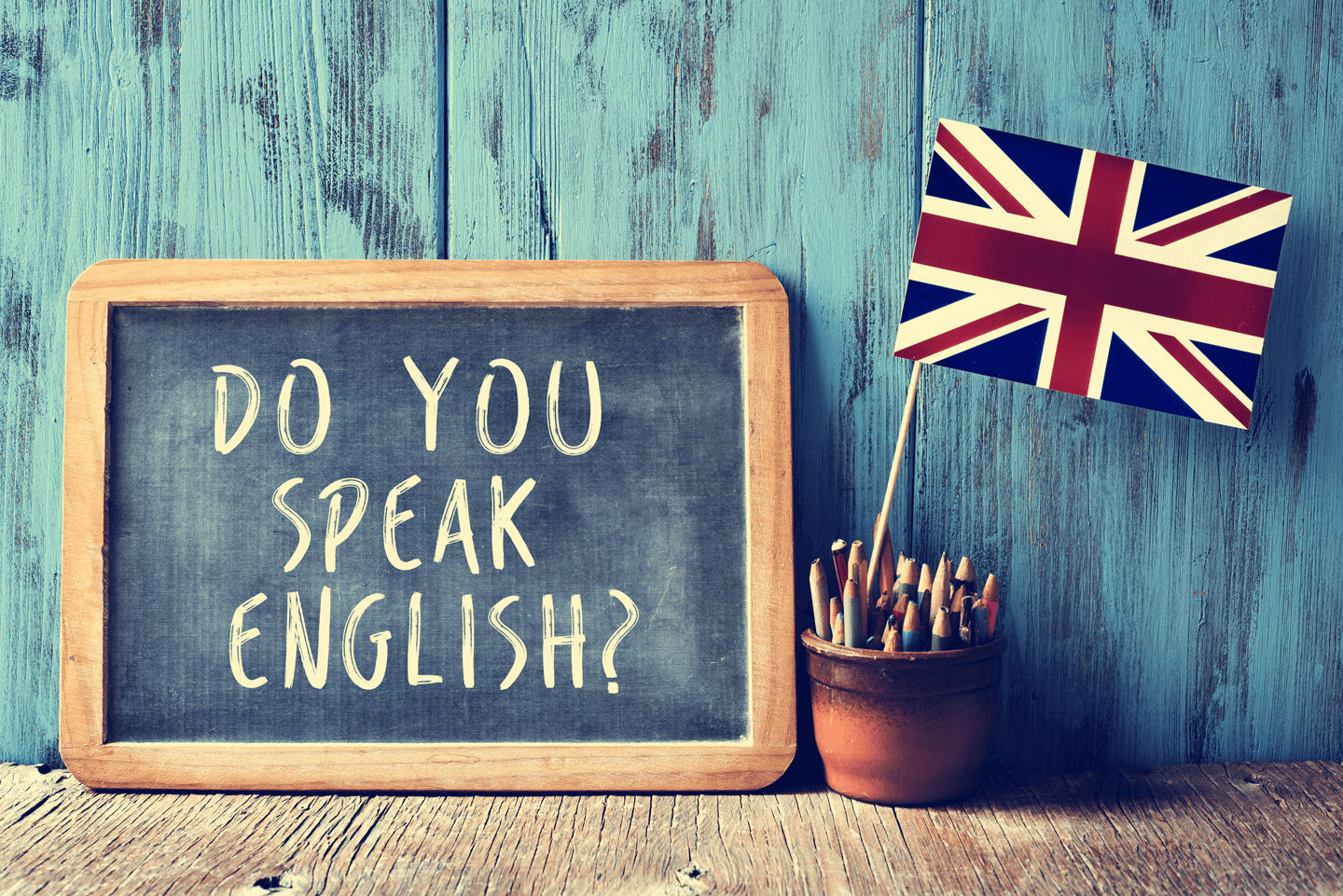
Is Thai hard to learn?
In some ways, yes. The main challenges are the 5 tones and the relatively different vocabulary from English. Thai is written without spaces between words, which makes it difficult to distinguish where one word ends and another begins. On the positive side, the grammar isn’t too complicated, and the phonetic alphabet is not too hard to learn, as words are pronounced as they’re spelled.
Learning the Thai alphabet is crucial, as it’s used in everyday conversation. Proper pronunciation ensures you’ll be better understood when speaking Thai. Although Thai is often transliterated into the Roman alphabet for easier communication with Westerners, this can lead to misinterpretation. A helpful practice is to have a local write down your destination to avoid confusion with cab or tuk-tuk drivers.

Our Best Selling Tour
- All-Inclusive
- Bangkok Most Famous Food Experience
If Thai food gets you hot under the collar, you need to check out our Bangkok Most Famous Food Experience. This Bangkok tour flies off the shelf and it’s easy...
HK$873/pp Learn more

A few words every tourist should know
Learning basic Thai words will make traveling around Thailand easier and serve as a great ice-breaker with locals. You might even impress a few of them with your knowledge!
- Hello - Sawasdee (khap/ka)
- Thank you - Khaawp khun (khap/ka)
- Sorry - Khor thot (khap/ka)
- Where is...? - Yoo tee nai...?
- How much? - Gee baht?
- Too expensive - Phaeng maak pai
- Can you give a discount? - Lot noi dai mai
- Goodbye - Laagorn
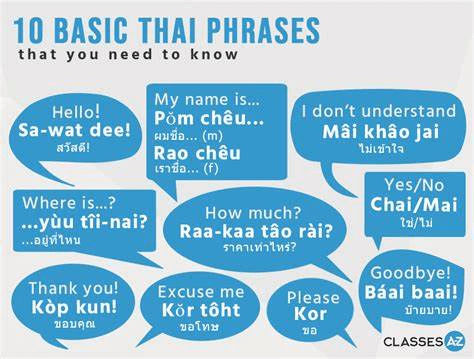
Fun Facts about Bangkok
The world-famous energy drink Red Bull was invented in 1976 by Chaleo Yoovidhya in Bangkok. At his death in 2012, he was the third-richest person in Thailand, worth around $5 billion USD.
Bangkok is home to the world’s largest Chinatown.
Due to development, Bangkok sinks at a rate of 2 to 5 cm per year.
Thailand is among the most socially tolerant countries in Asia, especially toward the LGBT community. In some places, you’ll even find three toilets, one specifically for transgender people, also known as ladyboys.
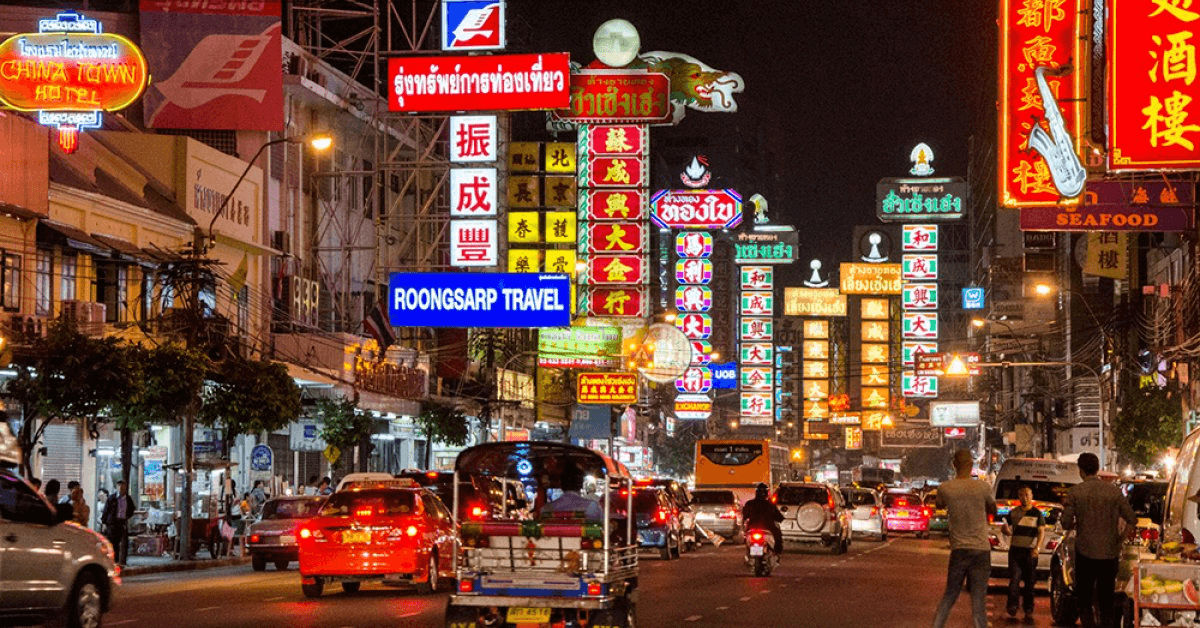
Goodbye, for now
Now that you’ve learned the basics about the Thai language and culture, there’s no reason to hesitate in booking your holiday to "The Land of Smiles"! Don’t worry too much about the language barrier; English is widely spoken, and communication with locals is generally easy. Tourism is a major industry in Thailand, and most locals speak a good amount of English.
When you’re ready to book that holiday and explore Bangkok, you’ll find a city full of history, culture, traditions, and architectural beauty. You’ll enjoy an exciting adventure visiting temples, food vendors, and shopping markets. And although there’s plenty to see and do, you’ll also find a sense of relaxation in the experience. Whether it’s taking a private Bangkok tour or island hopping, you’re guaranteed to have an unforgettable time!
Recommended Articles
Get your VACATION on!
Expertly curated emails packed full of vacation inspiration, travel tips and more!



 +1 617 404 2125
+1 617 404 2125

